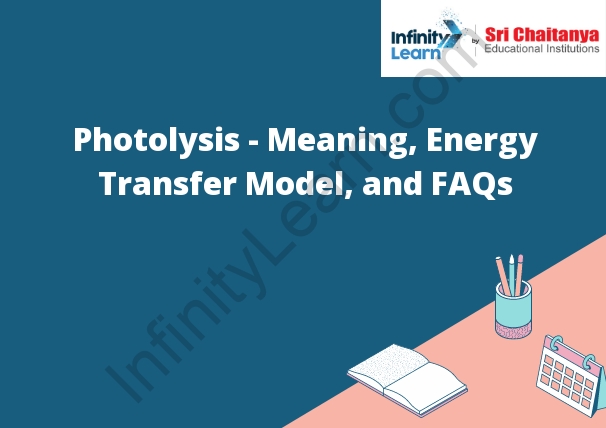Table of Contents
What is Photolysis?
In chemistry, photolysis is the decomposition of a chemical compound by the action of light. It is often used in photochemistry to break down compounds into smaller molecules.

About Photolysis
Photolysis is the splitting of a chemical bond in a molecule by photons of light. It is a type of photochemistry. The light energy liberates a molecule from a ligand or other small molecule.
In chemistry, photolysis is the process of breaking down a chemical compound by the action of light. This can be done either with sunlight or with an artificial light source. When light energy is absorbed by a molecule, it can cause a chemical reaction to take place.
In photolysis, the light energy is used to break the chemical bonds in a molecule. This can produce new molecules, or it can release energy in the form of heat or light.
Photolysis in Photosynthesis
The light energy liberates electrons from water molecules which combine with CO 2 to form O2 in photosynthesis.
Photosynthesis is the process that produces organic molecules from simple inorganic molecules from the sun’s energy. Light energy is converted into organic matter that can be used by plants and other organisms. The process of photosynthesis occurs in two stages: light-dependent and light-independent. The light-dependent stage is the process that uses light energy to produce the energy-carrying molecule ATP from ADP and inorganic phosphate. The light-independent stage uses the energy from ATP to produce carbohydrate molecules from carbon dioxide and water.
The light-dependent stage of photosynthesis occurs in the thylakoid membrane of the chloroplast. The light-independent stage of photosynthesis occurs in the stroma of the chloroplast. The light-dependent stage uses light energy to produce ATP from ADP and inorganic phosphate. The light-independent stage uses the energy from ATP to produce carbohydrate molecules from carbon dioxide and water.
The light-dependent stage of photosynthesis uses light energy to produce ATP from ADP and inorganic phosphate. The light energy is converted into electrical energy by the light-harvesting antennae of the photosystems. The electrical energy is then used to produce ATP from ADP and inorganic phosphate.
The light-independent stage of photosynthesis uses the energy from ATP to produce carbohydrate molecules from carbon dioxide and water. The energy from ATP is used to reduce the carbon dioxide to carbohydrate. The energy from ATP is also used to reduce the water to hydrogen and oxygen.
Energy Transfer Models
In physics, an energy transfer model is a mathematical model that describes the energy transfer between two objects. Energy transfer models are used to calculate the amount of energy transferred between two objects, as well as the time it takes for the energy to be transferred.
Energy transfer models are mathematical models used to calculate the amount of energy transferred between two objects. The most common type of energy transfer model is the one-dimensional heat conduction model. This model uses the Fourier equation to calculate the amount of heat transferred between two objects. Other types of energy transfer models include the two-dimensional heat conduction model and the three-dimensional heat conduction model.
Quantum Models
The most fundamental description of subatomic particles is in terms of their quantum state. In a quantum model, particles exist as a waveform with multiple possible states, or configurations, that are determined by the sum of their quantum numbers. The quantum state of a particle is described by its wave function, which is a function of the position, momentum, and other quantum numbers of the particle.
The wave function can be used to calculate the probability of finding a particle at a particular location or with a particular momentum. The wave function also determines the particle’s energy and other properties. In a quantum model, the behavior of a particle is determined by the sum of all of its quantum numbers, even if some of the numbers are not known.
Photoinduced Proton Transfer
In photoinduced proton transfer, a proton is transferred from one molecule to another as a result of light absorption. This process can be used to transfer protons from a donor to an acceptor molecule, or to generate proton gradients across a membrane.
Photolysis in the Atmosphere
The atmosphere is constantly bombarded with energy from the sun in the form of photons. Some of these photons are able to break the chemical bonds of atmospheric molecules, initiating a process called photolysis.
In photolysis, a photon of energy is absorbed by a molecule, breaking it into two smaller molecules. The process of breaking down a molecule into two smaller molecules is called dissociation.
In the atmosphere, photolysis typically occurs when a photon of ultraviolet light is absorbed by a molecule of nitrogen dioxide. This process creates two molecules of nitric oxide.
Nitric oxide is a greenhouse gas, meaning that it helps to trap heat in the atmosphere. The increased levels of nitric oxide due to photolysis contribute to global warming.





